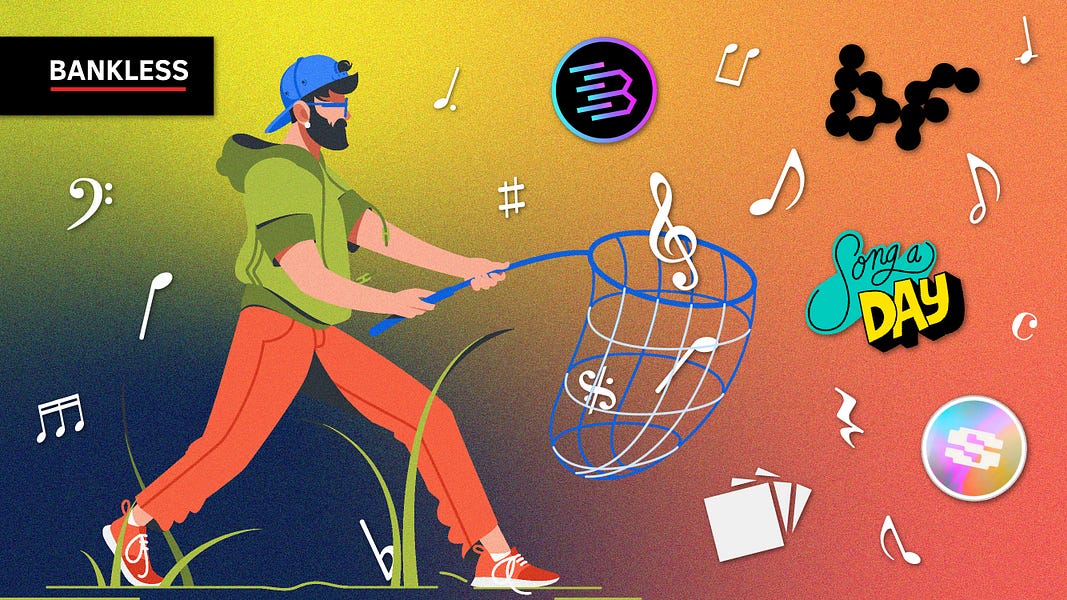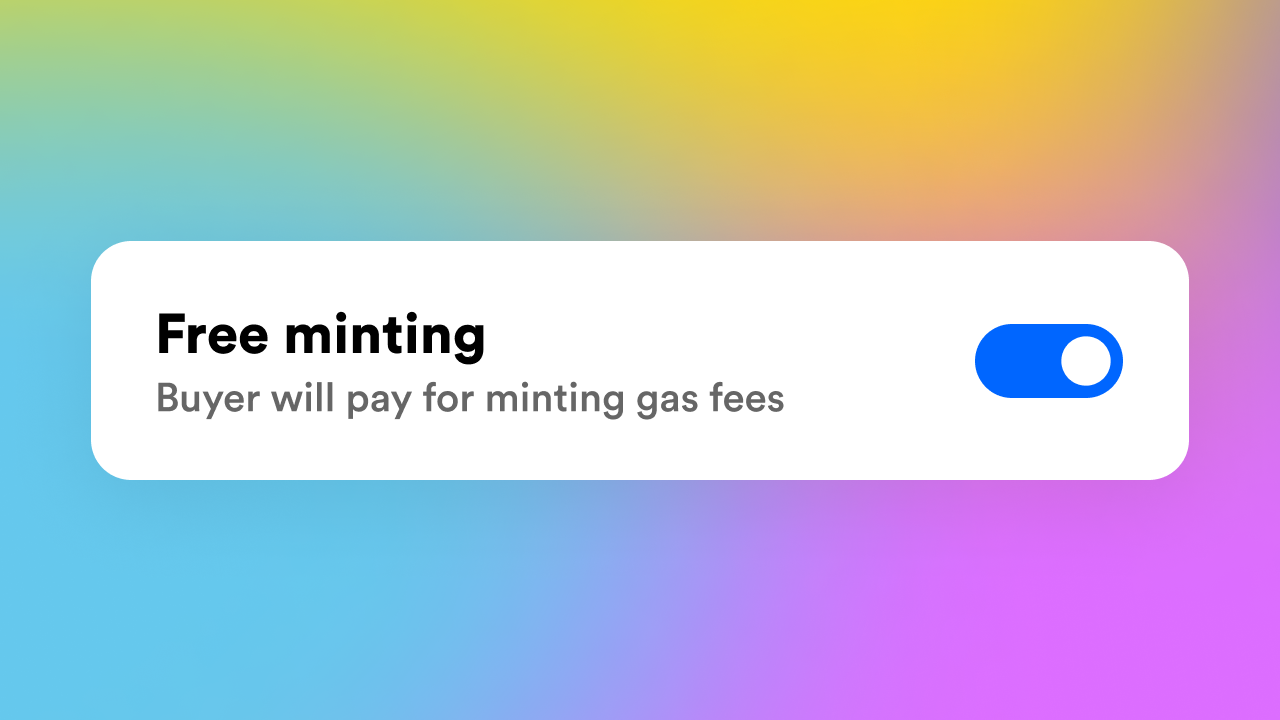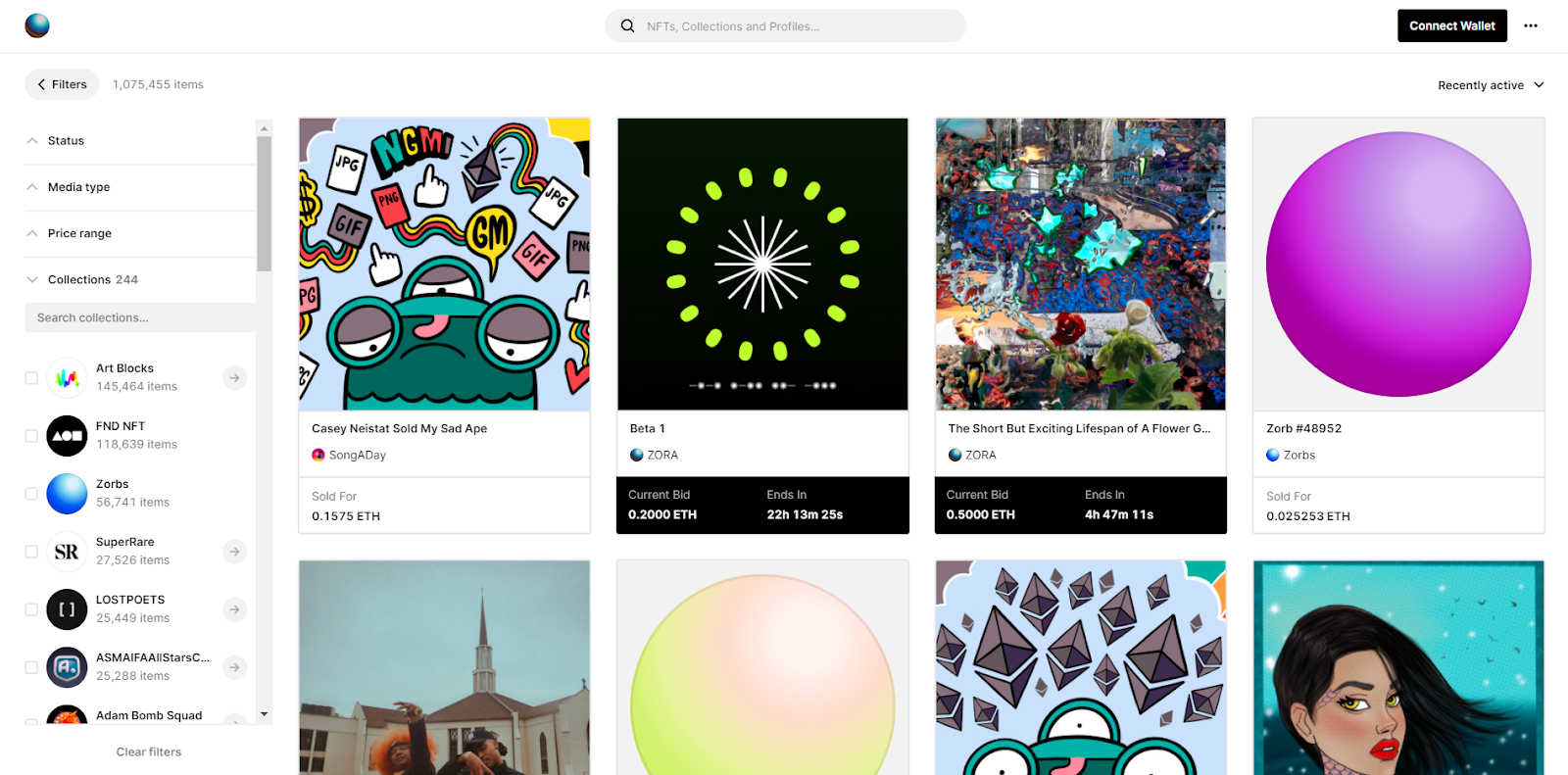How to get started with music NFTs

Dear Bankless Nation,
A year ago, we talked about how crypto will fix the music industry.
Your favorite artist isn’t making as much from making music as you think. They make virtually nothing when their song is played on popular streaming platforms like Spotify.
The streaming model is broken.
Crypto can fix this with NFTs.
And we’re finally starting to see this trend unfold. Music NFTs are a rising subsector in the NFT market as web3 musicians are making a lot more money than any of the streaming platforms.
An artist that’s getting thousands of plays per month is making more than someone with millions.
This is a perfect example of what Li Jin’s described as the ownership economy and 100 true fans.
There’s something brewing with music NFTs.
Here’s how to get started for both collectors and creators.
- RSA
Musicians are increasingly turning to music NFTs to bypass labels and connect directly with their fans. While the rise of streaming services hasn’t been lucrative, music NFTs unlocks a new monetization model for any artist.
Accordingly, there’s a growing consensus in the NFT ecosystem that music NFTs will become much more popular going forward. This Bankless tactic will walk you through both collecting and creating NFTs!
- Goal: Learn how to create and collect music NFTs
- Skill: Intermediate
- Effort: 1 hour
- ROI: Music sales / potential upside for collectors
Why make music NFTs
NFTs are a powerful new resource in the toolbox of musicians.
That’s because music NFTs open up new advantages and new paths to self-sufficiency for creators. These possibilities include:
- Programmable media — What if a piece of music could be a 1/1 artwork, a collectible, a music video, and a membership perks card all at once? And what if that piece automated secondary royalties to the artist and could be set up without a rent-seeking label? Music NFTs open up unprecedented design spaces for songs as digital objects.
- DIY distribution — Instead of dealing with labels, musicians can use NFTs to bring their music directly to their fans; this “auteur” approach lets artists readily control all the details of their releases instead of music executives.
- Trailblazing — The NFT ecosystem remains very young and the music NFT scene is even younger; accordingly, a growing wave of musicians are pioneering new possibilities here, and this trailblazing is being met with great interest by fellow NFT fans and creators. In other words, making music NFTs affords tremendous opportunities to connect with new passionate audiences from around the world.
Getting Started
If you’re interested in creating music NFTs or collecting music NFTs, you’ll need a few things to get started.
- ⛽ ETH to cover gas costs for minting/purchasing NFTs.
- 🌐 A browser wallet for interacting with NFT platforms; MetaMask, WalletConnect, Coinbase Wallet, and Fortmatic are popular options.
- 🎵 If you’re looking to mint music NFTs, you’ll need music! Commonly supported file types include MP3, MP4, and WAV files.
How to collect music NFTs
It’s worth stressing that the music scene in the NFT ecosystem is very early. But if you’re looking to support cool artists and cool projects who are experimenting with NFTs and making music you enjoy, you’ve come to the right place.
Toward that end, there’s no “right” way to collect music NFTs.
Just find artists you like that make music you like—you’re supporting them. If you’re looking for a get-rich-quick scheme in the next hot sector, you’re setting yourself up for frustration. Today, most music NFTs are collectibles, not investments. They are a work of art. You should treat it as such and collect (not invest) what you like with no expectation of future return. Projects like Royal are working to embed music NFTs with royalty rights, but it’s still pretty early in this area—perhaps a tactic for another time!
That said, if you’re new to the NFT ecosystem and don’t know where to look, here are some good places to start collecting your first music NFTs.
- Catalog — A specialized marketplace for 1-of-1 NFT music releases.
- Sound.xyz — A new music NFT platform for creators to release limited time drops. Secondary sales can be found on popular NFT marketplaces like OpenSea, Rarible, and others.
- Futura — A 3D generative art and music project created by Euler Beats.
- SongADAO — A community based around Jonathan Mann’s Song-a-Day project.
- Beat Foundry — A new platform for on-chain generative music.
How to create your own music NFT
Creators! This section is for you.
Let’s say you have everything set up and you’re ready to mint your first song as an NFT.
Where should you start?
This mainly depends on how comfortable you are with using crypto and NFT apps. Below I’ll walk through beginner, intermediate, and advanced options to give you a better sense of the possibilities available.
Beginner: OpenSea or Rarible

OpenSea & Raible 101
OpenSea and Rarible are popular general NFT marketplaces.
Both platforms let creators mint NFTs via lazy minting, which means you can list NFTs for free without having to pay an ETH gas fee to do so. This is very helpful for novices as it cuts down the number of transactions they need to make and sell NFTs.
How to start
On Rarible
📁 Supported file types: MP3 and MP4.
Head to rarible.com and connect your wallet. Click on the “Create” button, then use the minting UI to upload your song and fill out its details. Make sure the “Free minting” option is selected.
Proceed by pressing “Create item” and then with your wallet sign the ensuing transactions (this is free) to list your NFT.
On OpenSea
📁 Supported file types: MP3, MP4, and WAV
Go to openea.io and connect your wallet. You will need to initialize your account if this is your first OpenSea listing, and this will cost an ETH gas fee. When you’re ready to proceed, press the “Create” button.
This will take you to the OpenSea Collection Manager, which makes use of lazy minting. Then simply upload your song, fill out the details, and click on “Create” to finish up!
Intermediate: Zora

Zora 101
Zora is an NFT marketplace protocol.
Simply put, the protocol lets users deploy and control their own NFT markets, so musicians can rely on Zora to create storefronts for their songs. Zora handles all of its minting and listing activities on-chain, so gas costs are higher for creators. On the flip side, this on-chain status affords artists superior durability and composability guarantees.
How to start
📁 Supported file types: MP3 and WAV
Go to zora.co and connect your wallet by signing a transaction.
Click on the plus-sign symbol at the top of the site and click on “Mint new NFT.” Then click on “Audio” and upload your song file.
Finish up by inputting the details of the track and selecting your royalty percentage. 10% has become a popular standard, so I recommend that. Press “Continue” and then “Finalize and Publish.” Wait for the upload to finish and then complete the minting transaction in your wallet. After this your song will show up on your Zora profile shortly!
Advanced level: Manifold Studio

Manifold 101
Manifold Studio lets artists deploy their own Manifold Creator contracts for releasing NFTs. It’s actually pretty straightforward to set up a Studio contract, though it takes a couple more steps than alternative options. These steps are worth it because Manifold Studio offers more than a few powerful functionalities, like support for dynamic NFTs, airdrops, on-chain royalties, and more. If you’re a musician looking to publish music NFTs, Manifold Studio offers a compelling suite of resources.
How to get started
📁 Supported file types: MP3, MP4, WAV, FLAC, ACC
Go to studio.manifold.xyz and sign in with your Ethereum wallet.
Click on the “Start New Contract” button at the bottom of the page. Set up your smart contract’s details, which will entail deploying it to the Rinkeby testnet first and then on Ethereum. In kind, you’ll mint a test NFT to Rinkeby first before you mint your first Ethereum NFT. If you need help along the way, Manifold has helpful tutorials for every step of the minting process!
👉 Platforms like Catalog and Sound.xyz are whitelisted! Check out their website and fill out their artist onboarding applications to get started.
Conclusion
Music NFTs isn’t a catch-all solution to all the issues of the contemporary music industry. However, they do represent a bold flight of escape from the status quo of record labels, and they point to new paths of self-sufficiency for musicians who have been prey to middlemen for too long.
Indeed, music NFTs put the power in artists’ hands and help them call the shots and reap all the rewards of their hard work. This dynamic is really empowering, and it’s why I have no doubt that music NFTs are here to stay and will grow much further in popularity.
Action steps
- If you’re a musician with a song to spare, try minting your first NFT!
- Collect your first music NFT if you haven’t already.